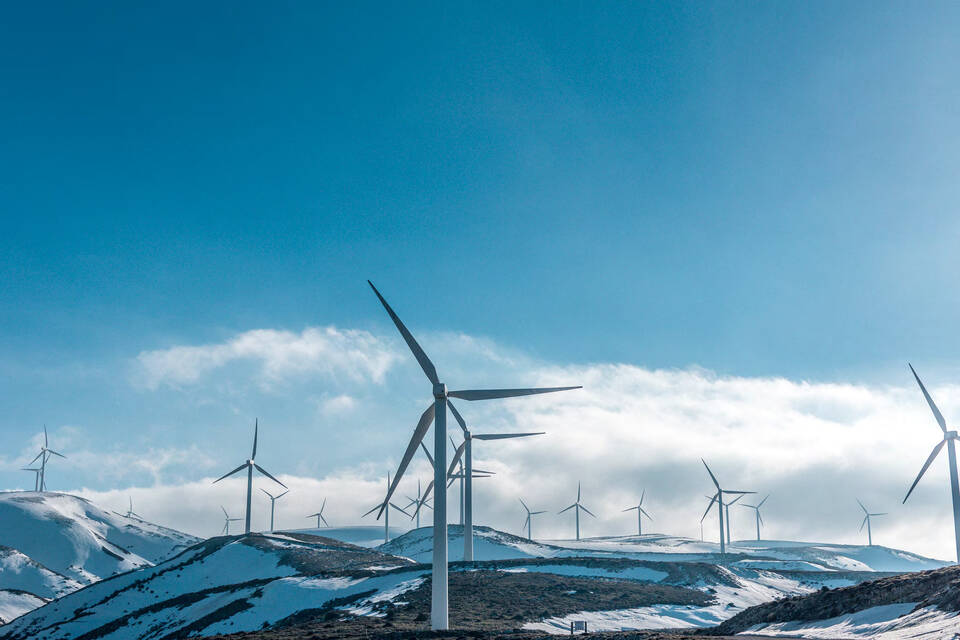Environmental and Recreation Benefits
The Climate Change (Emissions Reduction Targets) (Scotland) Act 20191 commits Scotland to achieving net zero greenhouse gas emissions by 2045 at the latest, and also sets two interim targets to reduce emissions by 75% by 2030 and by 90% by 2040. To help meet this commitment, the Scottish Government have set out an ambition for an additional 8 – 12GW of onshore wind to be installed in Scotland by 20302.
The consented Ben Sca Wind Farm and its Extension will offset circa 53,000 tonnes of CO2 annually3, while meeting the electricity needs of around 35,600 homes. Should consent be granted for the proposed amendments to the scheme, these figures would increase to c.61,000 tonnes of CO2 annually and 41,300 homes.
An assessment utilising the Scottish Government’s Carbon Calculator tool has determined that the renewable energy produced from the Ben Sca Wind Farm, and the associated reduction in carbon emissions achieved through the provision of this energy, will offset the carbon emissions related to the construction of the wind farm in approximately 14 months from the start of generation. Following this initial period of carbon payback, the wind farm would be contributing towards the Scottish Government’s national objectives on reducing carbon emissions for the remainder of its lifetime (c. 29 years).
Additionally, enhancement benefits have been identified for recreation and land use through the Habitat Management Plan (HMP), which proposes to restore peatland habitat within the wider site boundary, and the provision of access around the site through a network of recreational paths and trails promoted as part of the Ben Sca Wind Farm.
Other Economic Benefits
The EIA Report prepared to assess the impact of the original Ben Sca Wind Farm application included a socio-economic assessment which identified the creation of employment during the construction phase and injection of several million pounds into the Highlands and Scottish economy as the key positive effects. This socio-economic assessment was prepared on the basis of a 9-turbine project, as was originally applied for prior to the removal of the two turbines located closest to the summit of Ben Sca, following concerns raised by The Highland Council, primarily in relation to the potential landscape and visual effects.
It is planned that the two extension turbines would be constructed alongside the 7 turbines, taking the development back to the full 9 turbines. As such, the effects previously identified in the original Ben Sca Wind Farm EIA are wholly relevant. The socio-economic assessment estimated that the full 9-turbine development could support c.40 employment ‘person years’ in the Highland area during the construction phase. In gross value added (GVA) terms, the construction phase has the potential to inject £2.4 million into the Highland economy and £9 million into the overall Scottish economy.
1. https://www.gov.scot/policies/climate-change/reducing-emissions/
2. https://www.gov.scot/publicati...
3. Calculation correct as of December 2022 based on RenewableUK methodology, utilising the most recent household consumption and non-renewable emissions statistics from the Department of Business, Energy and Industrial Strategy (BEIS) (https://www.renewableuk.com/page/UKWEDExplained)

